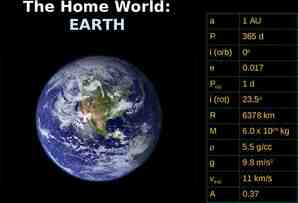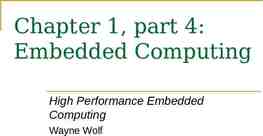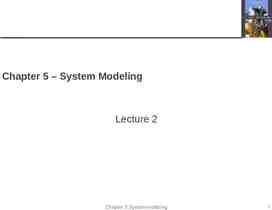Computerised Financial Systems
18 Slides925.57 KB

Computerised Financial Systems

Module 1 – Spreadsheets INTRODUCTION A spreadsheet program is used to manipulate and perform numerical calculations. With the aid of a spreadsheet, one is able to perform various calculations ranging from very simple to very complex mathematical and financial calculations. www.futuremanagers.com

Module 1 – Spreadsheets (continued) PRACTICAL APPLICATIONS In the business world and commerce a spreadsheet program is an essential and useful tool to assist with calculations. With this tool at hand, the management is able to analyse statistics, make informed decisions and draw conclusions. www.futuremanagers.com

Module 2 – Stock reports USING A SPREADSHEET FOR KEEPING INVENTORY The inventory sheet should consist of at least five inventory items which are: Inventory code; Selling price VAT included; Item code; Selling price VAT excluded; Quantity; Gross profit amount; Cost price; Gross profit percentage; and Selling price; Column totals. Value Added Tax (VAT); www.futuremanagers.com

Module 3 – Stock cards USING A SPREADSHEET TO PRODUCE STOCK CARDS There are different methods: First-in-first-out (FIFO); Last-in-first-out (LIFO) Average cost price; and Specific identification method. www.futuremanagers.com

Module 4 – Salaries and wages INTRODUCTION Most businesses employ workers. These workers have to be remunerated for the work that that they have done on behalf of the business. The remuneration can be made on a daily, weekly, fortnightly or monthly basis. The business is required to keep records of the expenditure of salaries and wages. www.futuremanagers.com

Module 4 – Salaries and wages (continued) USING A SPREADSHEET FOR THE SALARIES AND WAGES JOURNALS Salaries are paid to employees for the work that they have done. Deductions are the amounts that are deducted from the gross salaries or gross wages. Contributions are additional contributions that are made by the employer towards the various employee funds. A Salaries Journal provides for gross salary, deductions, employer’s contributions and net salary. www.futuremanagers.com

Module 5 – Income statement INCOME STATEMENT An income statement is a financial statement that is drawn up for a given accounting period. This statement contains details of income and expenditure and will indicate whether the business has made a profit or a loss for the period. www.futuremanagers.com

Module 6 – Manufacturing PRODUCTION COST STATEMENT The Production cost statement is drawn up to determine the total cost of production of finished goods. www.futuremanagers.com

Module 6 – Manufacturing (continued) INCOME STATEMENT The Income statement of a manufacturing business undertaking makes provision for the accounting aspects that are specific to this type of business. The cost of goods manufactured in a manufacturing undertaking corresponds with the cost of goods purchased in a trading undertaking. www.futuremanagers.com

Module 6 – Manufacturing (continued) BALANCE SHEET The balance sheet of a manufacturing business undertaking corresponds with that of a trading business undertaking, generally speaking. The most important difference is in respect of the inventories. Raw materials, finished goods, work-in-process and consumable goods appear in the balance sheet of a manufacturing undertaking as part of the notes dealing with inventories. www.futuremanagers.com

Module 7 – Balance sheet THE BALANCE SHEET The balance sheet is a statement that reflects the financial position of a business undertaking over a specific period. It shows the financial position of the business in terms of assets, owner’s equity and liabilities. The total assets are equal to the total equity and liabilities. The balance sheet consists of two sections: namely an Asset section and an Equity and liability section. www.futuremanagers.com

Module 8 – Cash flow CASH FLOW STATEMENT A cash flow statement shows the inflow and outflow of cash of a business enterprise for a specific financial period. The income statement provides information on incomes and expenses during the financial period. The cash flow statement provides information on the source of all cash, as well as the application thereof, during the financial period. www.futuremanagers.com

Module 9 – Payroll SETUP ASSISTANT The Setup Assistant is a set of screens that guides the payroll administrator through the procedure of setting up a company to run a computerised payroll system from scratch. Details and information of the company are completed on the screens that are provided. www.futuremanagers.com

Module 9 – Payroll (continued) PAYSLIPS The capturing and editing of the pay period’s payslips are completed as the first stage of the payroll run. The payslip screen consists of the following six different tabs: Payslips; Contributed transactions; Income transactions; Leave transactions; and Deduction transactions; Default transactions. Benefit transactions; www.futuremanagers.com

Module 9 – Payroll (continued) PAYROLL RUN The Payroll Run is see the second stage. The Payroll Run involves the final calculation and printing of the payslips. www.futuremanagers.com

Module 9 – Payroll (continued) CLEAR RUN FLAGS The Clear Run Flags option allows the payroll administrator the opportunity to reset “flags” to allow the employee’s payslip to be recalculated and edited if errors occurred in the initial payroll run. Once the flags have been reset, the payroll administrator is able to edit the employee’s payslips and then repeat the payroll run. www.futuremanagers.com

Module 9 – Payroll (continued) PAY PERIOD UPDATE The Pay Period Update is the last step in the processing periodic payslips for the employees. At the pay period update, the current period’s payslip information is saved into history. No changes can be made to the information that is saved in the history. A Pay Period Update can only be run after the payroll run has been performed for all the employees in a specific pay frequency. www.futuremanagers.com






